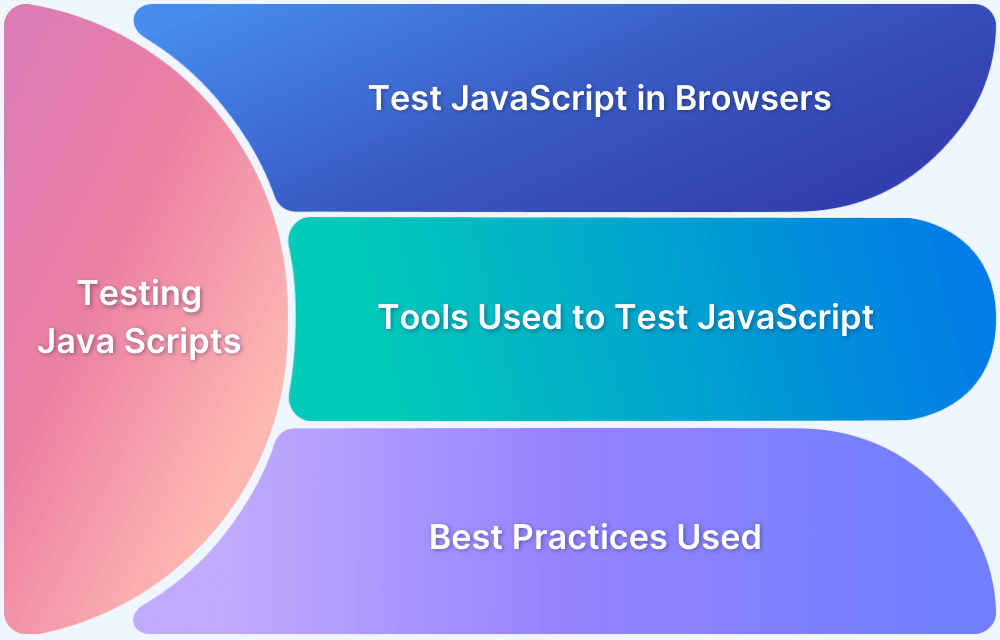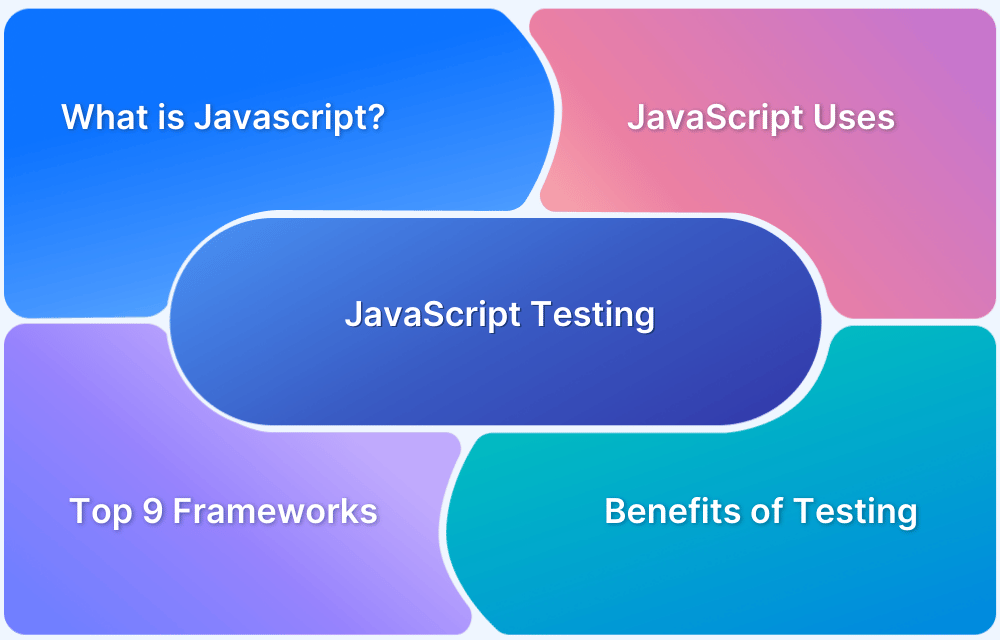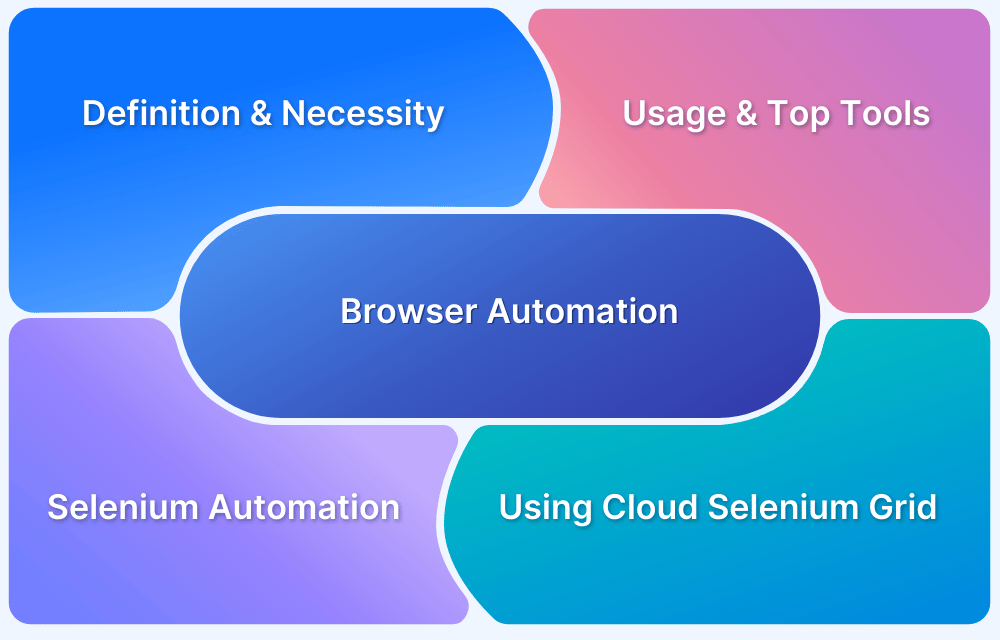Common JavaScript Errors every Tester should know
By Tom Collins, Community Contributor - September 20, 2022
JavaScript (JS) is the most popular programming language. The majority of the developers prefer to use JavaScript as it is open-source, lightweight and easily integrated with other frameworks & languages. Developers mainly use this programming language to build dynamic web applications and conduct unit testing in JavaScript, but there are some common faults/errors that every developer comes across while using it.
In this guide, we’ve covered some common JavaScript errors that every tester should know and the best ways to resolve them.
Common Errors of JavaScript and How to Resolve Them
DOM-related Errors
DOM is also known as Document Object Model. It’s one of the crucial elements of a JavaScript-based website interface. Because it handles most of the website’s content, structure, and style, DOM-related errors are responsible for 68% of the top 10 JavaScript errors. So it clearly shows that developers who work with DOM come across various errors and faults during web application testing.
However, DOM is a core part of the JavaScript programming language which handles the interface part to make the HTML-based website more friendly, interactive, and responsive. In other words, DOM is the reason why JavaScript language was released.
Here’s one of the common errors while using a DOM element:
<!DOCTYPE html> <html> <body> <script> document.getElementById("container").innerHTML = "Common JS Bugs and Errors"; </script> <div id="container"></div> </body> </html>
If the above code runs on the Chrome browser, it will display an error on the developer console. This error comes because the Chrome browser isn’t aware of the <div> element while the code runs.
To resolve this error, the easiest method is to place the <div id=”container”></div> just before the starting the script tag.
Here’s what it looks like after implementing the line:
<!DOCTYPE html> <html> <body> <div id="container"></div> <script src="https://ajax.googleapis.com/ajax/libs/jquery/3.3.1/jquery.min.js"></script> <script> document.getElementById("container").innerHTML = "Common JS Bugs and Errors"; </script> </body> </html>
Now, the code can run successfully!
Syntax-based Errors
When a developer works on a web application based on JavaScript, it’s common to have a syntax error due to an incorrect line of code like missing parentheses, unmatched brackets, or some other syntax fault. And it’s common knowledge that if the code is not written according to the standard JavaScript syntax, it will show errors.
According to reports, these syntax errors contribute to 12% of JavaScript errors. So these errors are not easily avoided because it plays a major role, and developers must focus on these errors and write as per standard syntax.
Here’s an example of a syntax errors:
When a code seems like this:
if((x > y) && (y < 77) { //more code here }
In the first line of code, the last parenthesis of the conditional statement is missing.
Let’s correct the syntax!
if ((x > y) && (y < 77)) { //more code here }
Now, the code can run smoothly without showing any syntax error.
So, developers must understand the standard syntax to follow while working on JavaScript-based web applications.
Cross-browser Compatibility Issues
In today’s world, websites require a modern interface, fast response, and interactive elements, and JavaScript plays a major role in building these. But one more essential thing about the website is that it must be compatible with different browsers.
Cross-browser compatibility is one of the major issues of JavaScript (JS). Whenever developers work on a website or web application, they may encounter cross-browser compatibility issues.
Here are some common cross-browser compatibility errors in JavaScript are:
- Modern JavaScript features on Older Browsers: One of the common errors in cross-browser compatibility is when developers build modern websites or web applications based on modern JavaScript features that are not supported on older browsers or their older versions.
- Browser Sniffing: It’s also known as Browser Detection. It’s a technique used in websites & web applications to identify the browser a visitor uses so that developers can run the relevant code to make the site compatible with that particular browser.
- Using Libraries: While developing the website and web applications, some native & third-party libraries are not supported on different browsers & their versions.
Solution for the cross-browser compatibility issues!
BrowserStack Live is a one-stop cloud-based cross-browser compatibility testing platform that provides a complete testing environment to the testers and gives access to 3,000+ real devices and browsers with different versions. Testers can test JavaScript-based websites and web applications on different browsers and identify bugs or JavaScript compatibility issues to resolve them.
Not Using Undefined/Null Keywords Properly
Undefined and null keywords contribute to 5% of all JavaScript bugs/errors. The reason is that many developers don’t know how to use these undefined and null keywords while building websites and web applications. So it’s important for developers to know both keywords and use while developing a JavaScript-based website or web application.
Null Keyword: The null keyword is an assignment value that usually denotes a non-existent value. It’s also a JavaScript object.
For example:
var codeJS = null; console.log(codeJS); //output is null console.log(typeof codeJS); //output is object
Undefined Keyword: The undefined keyword indicates any variable or property already declared as an assigned value.
For example:
var codeJS; console.log(codeJS); //output is undefined console.log(typeof codeJS); //output is undefined
However, developers should understand the usage of null and undefined keywords to prevent bugs/errors in JavaScript programs.
Undefined Methods
Another common error that contributes to 4% of all JavaScript errors is undefined methods. In this error, when developers use JavaScript to build websites and web applications, it shows errors when making a call to a method without giving its previous definition.
Let’s understand with an example:
var coder = { name: "Peter", age: 27, speak() { console.log(this.name); } }; coder.speakNow();
When this code runs on the Chrome browser, its developer console shows an error. It shows an error because the called function, i.e., SpeakNow(), has not been defined in the JavaScript code.
Read More: Guide to Test Planning
Improper Usage of the Return Statement
Sometimes, when developers use JavaScript to build any program, it shows an incorrect return statement, and it’s considered an error contributing to 2% of all JavaScript errors.
In JavaScript, the return statement stops the running functions from getting the output. But if the return statement is used incorrectly, it heavily impacts web application performance.
However, when developers break the return statement, it shows an undefined error.
For example:
function number(n) { var add = 5; return; n + add; } console.log(number(10));
When the above code runs on the Chrome browser, it shows an undefined error in the Chrome developer console. Its solution is that developers should stop breaking return statements in the JavaScript code.
Learn More: How to Inspect Element in Chrome
Closing Notes
Most of the errors in JavaScript arise because it’s not suitable for different browsers and their older versions. BrowserStack Live allows QA teams and developers to test their JavaScript-based programs on a real device cloud of 3,000+ real devices and browsers.
Just create a free account, choose any real device or browser (any version), and start testing the JavaScript-based programs.
Follow-Up Read: 5 Ways to Instantly Test JavaScript in Browsers



